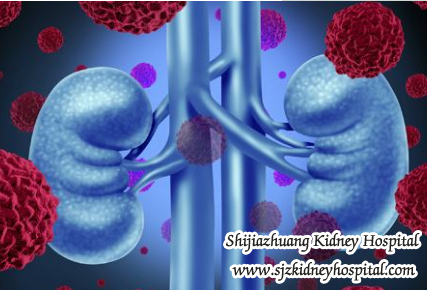Some Severe Symptoms May Occur To Diabetes
2018-12-03 11:04
 Diabetes is a systemic disease that can involve organs and systems throughout the body such as feet, eyes, kidneys, and skin.When foam urinates, swelling of the legs and feet may indicate damage to the kidney.
Diabetes is a systemic disease that can involve organs and systems throughout the body such as feet, eyes, kidneys, and skin.When foam urinates, swelling of the legs and feet may indicate damage to the kidney.
The small nephrons in the kidney are responsible for filtering metabolic waste from the blood by producing urine.At the same time, while filtering blood, the kidneys separate waste from useful substances such as proteins and store them in the body.In diabetes, however, high blood sugar can increase the strength of the kidneys.Over time, excessive workload can deplete the renal units, leading to decreased renal function.
When the nephron does not function properly, the protein passes through the filtration membrane of the kidney and eventually enters the urine.In the early stages of diabetic nephropathy, patients contain only a small amount of protein in their urine, called microalbumin, without causing other discomfort.When the loss of protein in the urine is assessed as heavy protein, there is foam in the urine, which is called foam urine.It is often accompanied by swelling of the legs and feet.
Loss of protein in the urine lowers plasma osmotic pressure, allowing fluid in the blood vessels to seep into the tissue and maintain pressure balance.For circulation and gravity, swelling usually occurs in the lower part of the body, such as the legs and feet.
Fluid and sodium retention can also increase swelling in diabetics.
Once foam urine and severe swelling occur, this indicates that diabetic nephropathy has progressed to at least stage 3.If not treated in time, end-stage renal failure will be an inevitable result.
For diabetic nephropathy, what they should do is to control blood sugar levels to prevent further damage to the kidney.In addition, stem cell therapy is needed to restore damaged kidney structures and regain pancreatic beta cell function by replacing cells with new ones. From the comments above we can know something useful to diabetic nephropathy and any questions about that please contact us through the following message:
E-mail: kidneyservice@hotmail.com
WhatsApp: +8615512139310
Any kidney problems? Please consult our online doctor. The satisfaction of patient is as high as 93%.
What you also want to know:
How can I get this treatment ?
How can I get this treatment in my counties ?
How much is this treatment ?
What is the duration if I receive this treatment in your hospital ?
How can I go to your hospital ?
Tag: Diabetic Nephropathy Diabetes Nephrons High blood sugar Loss of protein Fluid and sodium retention
Pre: The Traditional Chinese Medicine Can Help Patients Improve Kidney Function
Next: Children With Chronic Kidney Disease Can Be Treated With Reasonable Treament
Leave a Message
Any questions?Fill the form below and we will surely attend to you within 24 hours.Free medical answers from experts!
About Hospital
Patient Story
- The Key Point In The Course Of Treatment
- Drinking More And Urinate Frequently Means Kidney Problems
- How To Deal With Occult Blood With Correct Methods.
















